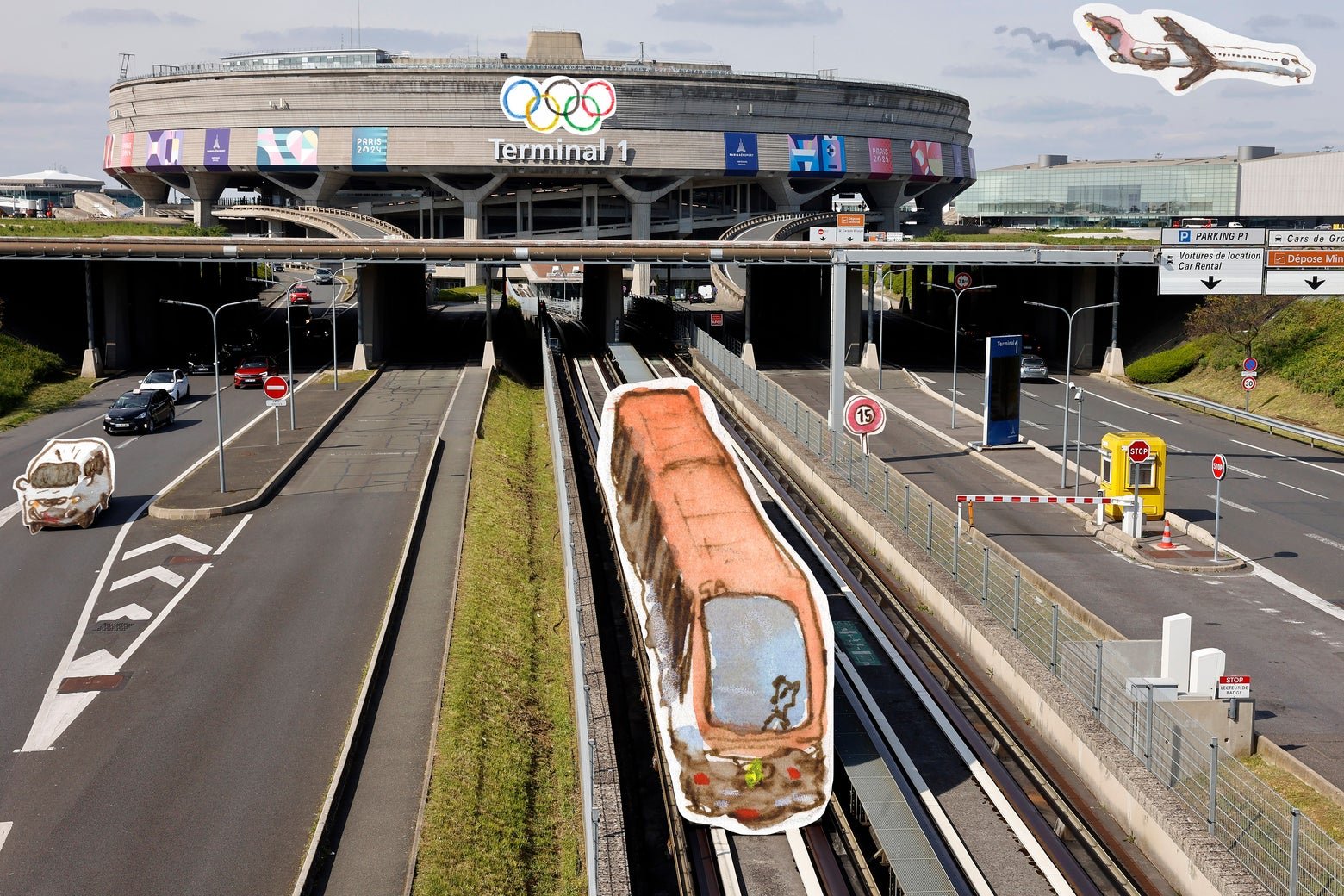This is part of Slate’s 2024 Olympics coverage. Read more here. If you’re enjoying our coverage from Paris, join Slate Plus to support our work.
To understand the challenge of making these Paris Olympics the “greenest-ever Games,” consider the Coke.
Organizers planned to cut in half the amount of plastic used at the London 2012 Games, in part by establishing a system of reusable plastic cups at the concession stands in the venues. Each cup came with a 2-euro deposit. But Olympic sponsor Coca-Cola had trouble installing soda fountains everywhere, so many venues had the worst of both worlds: Plastic bottles in the fridge, each one emptied into a plastic cup. In addition to being silly, it was slow.
It’s a small example of a broader trend: Paris 2024 had enormous ambitions for the Games, planning to cut the carbon footprint by more than 50 percent compared to the London Games 12 years ago. But there are some things inherent to the Olympics, like the role of Coca-Cola, that you can only change so much.
At the competitions themselves, the focus on sustainability is impossible to miss. There are the slogans: “One, two, tri” (the French word for recycling); “Veni, vidi, veggie”; and “Have a gourde day” (the French word for water bottle). These are the first pro sports venues I’ve ever entered where metal water bottles are permitted, and many people are bringing them.
Other high-profile commitments have been made at the Olympic Village, where there is no food coming by plane; the beds are made of cardboard, and the mattresses from recycled materials. There was supposed to be no air conditioning, though that promise has been undercut by the national Olympic committees.
But the bulk of the Olympic carbon budget comes from three sources: energy, construction, and transportation. On energy, France had a head start: Its power grid is among the cleanest in the world, since most electricity comes from nuclear plants. Anything Olympic that’s not connected to the grid is running on batteries and solar panels.
Construction is the more interesting part. Most venues are temporary structures; each of the two new stadiums is an environmental showpiece. The arena at Porte de la Chapelle (soon to be the home of a Parisian basketball team) is made from low-carbon concrete, filters the air from the nearby highway, and is framed in recycled aluminum. The Aquatics Center, with its dipping roof to minimize the volume of air to be cooled or heated, is a modular building whose wooden components were cut and finished in Alsace before being assembled on-site in Saint-Denis. One of the designers told Bloomberg CityLab: “You can smell [the wood] when you’re in the pool.”
